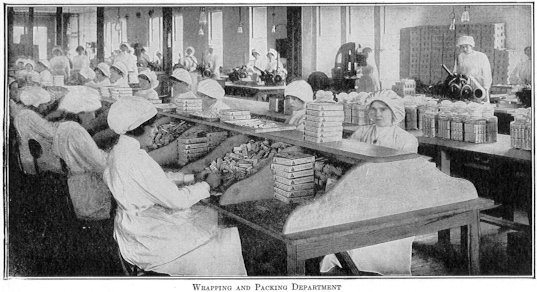Chewing Gum
Today, an odd tale about chewing gum and the Alamo! The University of Houston's College of Engineering presents this series about the machines that make our civilization run, and the people whose ingenuity created them.
We've always chewed one thing or another that has no food value: wax, tobacco, betel nuts, but chiefly tree gums. As a boy, I'd chew hard beads of spruce resin that I found in the woods.
Did you know that Biblical frankincense is an African resin? You can burn it as incense, but it's more common to chew on it and enjoy its peculiar aftertaste. I take odd comfort in the image of the Wise Men offering chewing gum to the Christ Child.
The sap of the Central American sapodilla tree makes a fine chewable gum. The ancient Mayans harvested it and packaged it into chewable lumps. They called the gum tsictle, from which we get our word chickle -- the base for modern chewing gums.
Robert Hendrickson writes about chewing gum. By 1869, he says, drug stores carried chewable waxes. That year, a remarkable meeting took place between General Santa Anna (who'd slaughtered occupants of the Alamo) and an inventor named Thomas Adams.
Sam Houston spared Santa Ana's life when he defeated him at San Jacinto. Santa Ana went on to a choppy political career that included a brief and unsuccessful turn as Dictator of Mexico.
Now, in 1869, 74-year-old Santa Ana was living in exile from Mexico and visiting, of all places, Staten Island. He was trying to raise money for an army so he could go back and take Mexico City.
His plan was to sell Mexican chicle to America as a substitute for then-expensive rubber. So he invited Adams to visit him. Adams took a chance and bought a ton of chicle from him, but he had no luck making it into a rubber substitute.
Then Adams's son, Horatio, realized he could make a chewable product. He gave it a try. He gave 200 balls of the stuff to a druggist, who sold them at two for a penny. By noon that day they were gone. So began the Adams gum dynasty. The Adams family made the first commercial chicle-based gum in 1871. They went on to create Adams Clove Gum, Chiclets, Blackjack, and more.
But chewing gum was déclassé from the start. It was worse: it was immoral. Emily Post wouldn't even say the word. It didn't so much have to be sold to the American public as justified.
So justified it has been -- for 120 years. Perhaps it promises cleaner teeth and stronger jaws. Admiral Byrd chewed gum at the South Pole to calm his nerves. Just the other day I read an article in American Scientist. Chewing gum appears to fight depression by releasing serotonins.
So chewing gum came to stay. And what about Santa Ana and Adams? Santa Ana died penniless; Adams died rich. And commercial chewing gum has been a uniquely American gift -- to an all too tense waiting world,
I'm John Lienhard, at the University of Houston, where we're interested in the way inventive minds work.
(Theme music)
Hendrickson, R., The Great American Chewing Gum Book, Radnor, PA: Chilton Book Co., 1976.
Jacobs, B.L., Serotonin, Motor Activity and Depression-Related Disorders. American Scientist, Vol. 82, No. 5, September- October, 1994, pp. 456-463.
I am grateful to Kathryn Krause, UH Library, for providing the Hendrickson source, and to historian Margaret Swett Hensen for additional counsel on this episode.

The 1923 Wonder Book of Knowledge shows a "modern" chewing gum factory